Thinking about getting into the world of photography? Or has the time come to change your camera? One may get confused as the world of photography has changed phenomenally. Advancements in technology have brought us new cameras and lenses especially Mirrorless Cameras.
One can say that the introduction of Mirrorless Cameras has Reinvented the camera itself and revived the camera industry but this does spark an important debate between all camera enthusiasts, and that great debate is Mirrorless vs DSLR : which one is better?
As of today, people are still hesitant to buy Mirrorless Cameras for many reasons and the one is that they are still imperfect.
Some may disagree and say that the roles are reversed today, as every professional photographer owns a mirrorless camera. The latest and greatest technologies are found in these cameras and any amateur photographer would lean towards DSLR due to its cheaper price but that’s what we are here to settle.
Table of Contents
DSLR VS MIRRORLESS : How Do they Work?


What is DSLR and How does it Work?
DSLR does stand for Digital Single Lens Reflex, I’m guessing you have no idea what that means, so let’s try and explain it differently.
DLSR’s have a very clever system of mirrors, prisms and a bunch of glass that captures light, bounces it around a bit and finally, it gets condensed and hits the image sensor and as soon as the shutter closes, the light that was captured is used to create the image. Which you then see on your screen. That’s how I would explain the workings of a DSLR to a 10-year-old (don’t take it personally) but I feel like we need to jump into some details:
- Let’s get one thing straight DSLR’s have a mirror in them.
- The light bounces upwards off the reflex mirror.
- This reflected light strikes the focusing screen/condenser, making it visible to our eyes.
- This projected image from the focusing screen is vertically and horizontally flipped as it enters the pentaprism/pentamirror.
- We then view the corrected image through the viewfinder located on the back of the camera.
- Now if we want to take a picture, we’ll just press the shutter button and you’ll hear a “slap”, that’s the sound of the shutter pressing down and the mirror flipping up, this is the time when our viewfinder goes black.
- All the light that was captured in this whole process is interpreted by the image sensor and it creates the image that we took, which we can see afterwards on our screen.
Pretty neat right?? Well, I would have called this “magic” back when this did not exist but actually, it’s just a bit of Optical Physics nothing much.
Read More!!
Check Out Our Article on Best DSLR Camera for Beginners
Other than this I can’t say much as I’ve explained DSLR’s as best as I could. Let’s look at our other contender, on the other side of the ring, the sleeker, the slimmer and young MIRRORLESS.
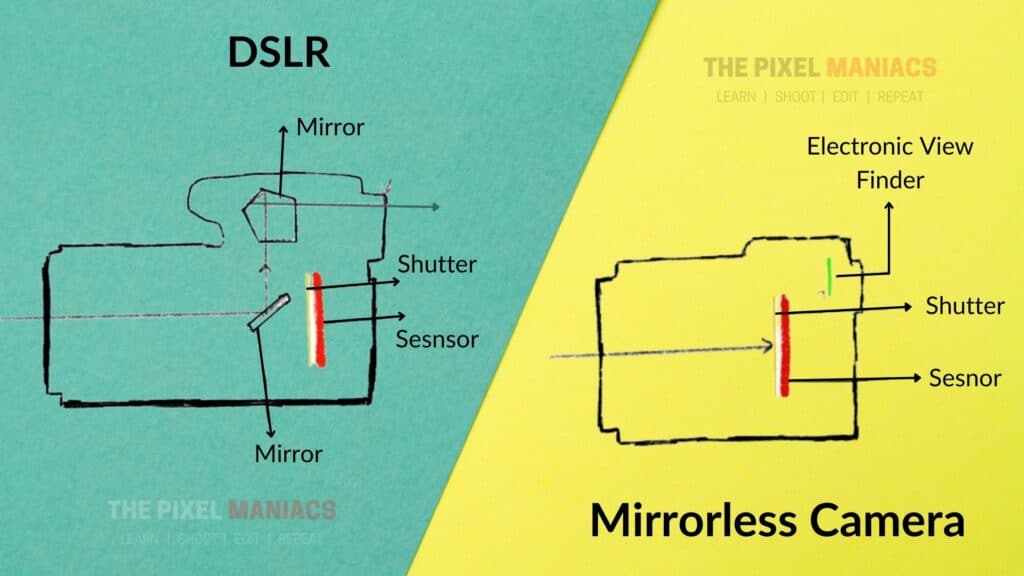
What is a Mirrorless Camera and How does it Work?
As it says in the name Mirrorless Cameras don’t have a mirror in them.
Instead of having a reflex mirror, mirrorless cameras heavily rely on their image sensor. In simpler words think of it as Live-View Mode and having it on all the time, having it on your LCD Screen and View Finder.
The funny thing is that the Viewfinder is electronic meaning you are seeing what the camera sees but according to your settings in real-time so that’s a plus point.
Let’s see where light comes in all of this and how you end up with an image.
- First and foremost, thing is that there is no mirror so light directly falls onto the sensor
- No bouncing of light occurs, no flipping, and sadly no “Slapping” sound or maybe a less satisfying sound occurs.
- When you press the shutter button, the sensor gets cut off from the light and all the light that was captured gets interpreted onto the sensor and thus produces an image that can be viewed from the LCD Screen.
- It’s that simple and honestly fewer parts mean less chance of something going wrong and that’s another thing going good for Mirrorless cameras over DSLR’s.
Mirrorless Vs DSLR : Key Differences
Now that we are done with introductions let get down to the real business of comparing both in Key Differences:
Pricing : DSLR vs Mirrorless Camera
| Pricing | Features | Camera to Buy | Value for Money |
|---|---|---|---|
| 500$ – 1000$ | Basic | DSLR > Mirrorless | Excellent |
| 1000$ – 1500$ | Good | DSLR = Mirrorless | Average |
| > 2000$ | Excellent | Mirrorless > DSLR | Good |
The price of both DSLR’s and Mirrorless Cameras varies and depends upon what kind of rig you are looking for. If you are a beginner then you are looking at a price range of $500 to $700, could be less if you go for a really cheap models but I would prefer you to avoid that and if you are a professional then you are looking at a price range of $1000 – $Where ever you want to go at this point.

If we talk about the cheaper side of the spectrum then I will give the win to the DSLR as it offers more options and more bang for the buck, in simpler words, it offers more features than its counterpart mirrorless in the same price range.
You get a viewfinder, better battery and better quality overall.
If we move to the other side of the spectrum, the pricier and expensive ones than DSLR’s and Mirrorless, then both are evenly matched. You get the same features, the same power and performance but Mirrorless do have the upper hand in terms of technology at this higher price point and I will prefer to buy a mirrorless if I ever wanted to spend big bucks.
Size & Weight
Size, as well as weight, are always important when we talk about cameras. In many cases, you are going to be using them in situations that will likely require you to move around, so the easier it is to move your camera, the better.
| DSLR | Mirrorless |
|---|---|
| Large | Small |
| Heavy Body | Compact Body |
| More Stable in hands | Less Stable in Hands |
| Good for Studio Setups | Excellent for Travelers and Street Photographers |
One of the main selling points of Mirrorless Cameras over DSLR’s is that mirrorless are smaller, have a compact body and are lighter in general, this is what makes them easier to use and carry around, even when you are using multiple cameras.
The reason why DSLR’s are heavier is that they need to fit a mirror, a pentaprism and another autofocus mirror and all this glass takes space and adds to the weight of the camera.
The bulky lens may not play in the favor of the lightweight mirrorless camera as DSLR’s also have bulky lenses and if the body is light while the lens is heavy then that combination is harder to control. But that isn’t a major flaw as the majority of the people that do buy mirrorless buy it for its small size.
This round has to go to Mirrorless for its size as DSLR’s need to cut down on the fat.
LENS Selection
It’s obvious that since DSLR’s have been in the industry for the longest time, they will have a wider selection of lenses a photographer can choose from and yes that is true they have a wide variety of lenses to choose from.
| System | LENS Selection | Price of Lens | Comments |
|---|---|---|---|
| DSLR | Huge | Relatively Less | One can find any lens from Cheap to Expensive and can cover every Need of Photographer |
| Mirrorless | Small but Growing | Relatively More | Telephoto Lens and Tilt Shift lens are pretty limited. Wild Life Photographers may have to wait further. |
If we take the Nikon F-Mount Line up and compare it with their Mirrorless line up then you have tons of options in the F-Mount Line up and few in the Mirrorless.
Plus, there aren’t many Tilt-Shift Lens and Telephoto Lens in the Mirrorless world yet.
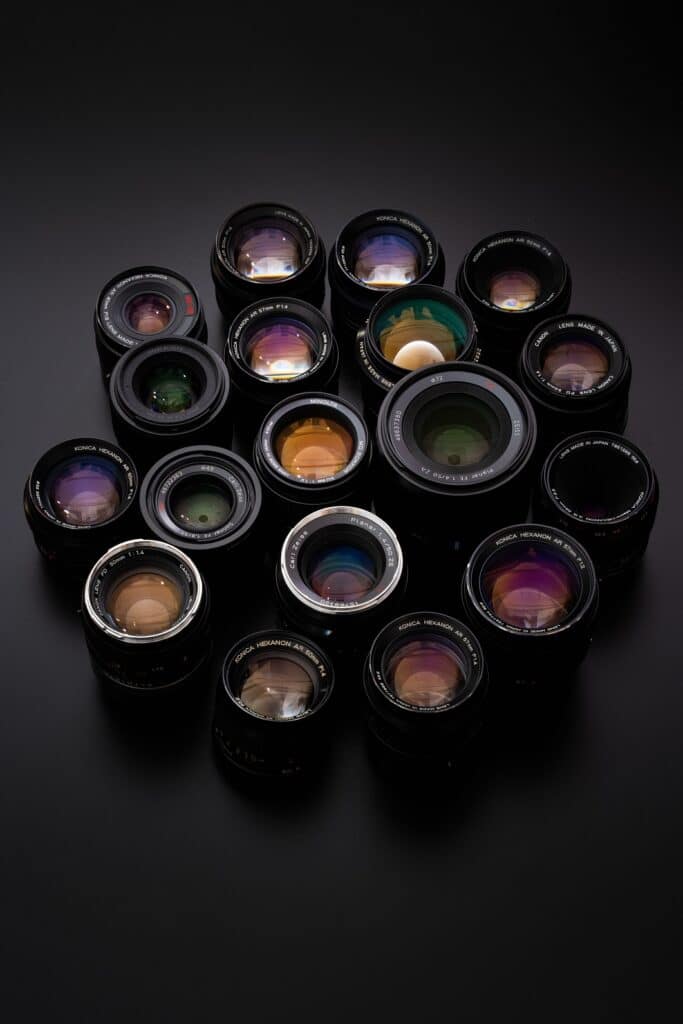
But that may not be true for a very long time as Mirrorless cameras are catching up, as they are growing in popularity and more and more people demand options.
But if one does have a Mirrorless camera and DSLR lenses then they can combine the two by using an Adapter, however doing so can affect some features that your mirrorless camera has to offer, such as:
⦁ Focal Point
⦁ Zooming Quality
⦁ Slower Autofocus
The DSLR has won this round no doubt but it can’t be the king in this format for long as Mirrorless cameras will soon catch up
Battery Life:
This is a very big key difference as the Mirrorless has a lot of catching up to do in this factor. Smaller sizes equal smaller batteries plus they are always operating in Live-View Mode, because of this they use up their batteries very quickly. This can be quite concerning and inconvenient for people who shoot for extended periods and aren’t close to a plug/socket. You can carry more batteries but that’s an extra investment.
As for their counterparts the DSLR’s which are larger, have larger batteries which equate to more battery life and is very convenient for people who shoot for extended periods and aren’t near to a plug/socket.
Even the cheaper DSLR’s seem to outperform their more expensive counterparts in this category of Battery Life.
Maybe in the future Mirrorless may get better battery life but presently it doesn’t seem like it so extra batteries are it for all those mirrorless people out there.
Viewfinder:
This difference boils down to what the photographer prefers in their line of work.
If we talk about DSLR then what you see in the viewfinder is exactly what the camera sees through the lens, there’s no difference. As explained above the mirror reflects the image into the Optical viewfinder.
Coming to the Mirrorless, as you guessed it doesn’t have a mirror so the image is shown in the viewfinder has to be made electronically. So, it’s an EVF, electronic viewfinder.
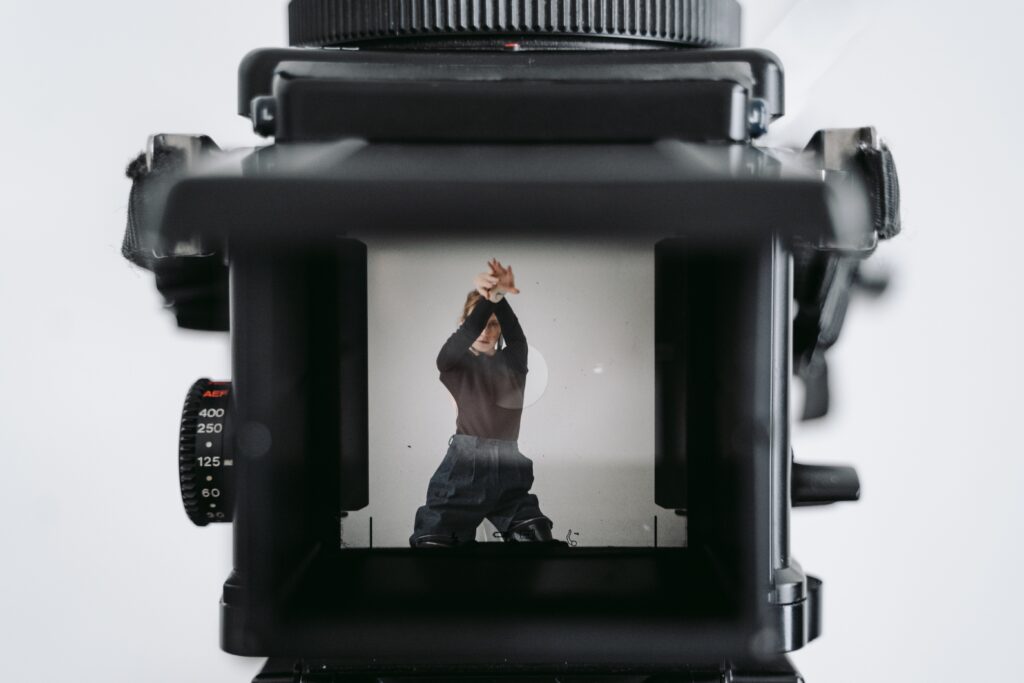
This does have its perks like showing the image in the viewfinder with all the settings like ISO, white balance and shutter speed taking into account which helps photographers know how their settings affect how the image will look like while DSLR’s users do not have this perk.
This Round shall be a draw as seeing your settings affecting your image in real life is helpful it does drain a lot of the battery life.
Image Quality – Mirrorless Camera vs DSLR
DSLR’s, as well as Mirrorless, are capable of shooting amazing quality pictures and image quality often boils down to the size of the image sensor, bigger the sensor, the better will be the pictures, both DSLR’s and Mirrorless will use the same sensor as they’ll be the only one available in the market.


Both cameras don’t have an edge over each other in terms of Low-Light Shooting, Resolution and Image Quality. Even if we were to take both cameras, having equal hardware and shooting in a controlled environment, not even a professional would be able to tell the difference between them, since they are more or less the same.
It’s the same for APS-C and Full Frame DSLR’s and Mirrorless cameras.
This Round shall be a draw as well.
Video Quality and Video Features:
If we talk about video quality and video shooting then the mirrorless camera wins it not by much but it does, that is because even though both DSLR’s and Mirrorless can shoot at 4K and 60 fps, it depends on the model though but mirrorless has a superior focusing system in video, as they use Phase-Detection Focus Sensors, which helps them focus onto objects and subjects quickly than their counterparts whose video gets a bit blurry during focusing.
Read More….
Good Video Quality of Mirrorless cameras has enabled Many People to start a vlogging channel. and if you’re into vlogging we have an full article on Best Camera for Vlogging Do check it.
Also, it is more common to find 4K Video Support even in cheaper Mirrorless Cameras as compared to their counterparts the DSLR’s. And to find 60 fps in a lower budget is also very common, which gives the Mirrorless a really strong advantage over the DSLR.
This Round shall go to the Mirrorless.
User Experience, Buttons and Overall Feeling:
If we talk about the user experience in general, it Is that people find larger cameras such as DSLR’s a bit sturdier and more camera like as compared to their counterparts. If I take a Nikon D5300 for example and pair it up with the Canon M50, then the D5300 overall feels like a better camera, with all of its buttons and large size and it feels good in the hands of a photographer. But the Canon M50 does surpass it as it’s a far newer model with all the latest and greatest features and it has better Video Resolution.
This Round shall be a win for both as in-hand experience plays an important role in buying a camera as well as the features it offers.
Auto Focus Performance
This is a key difference I would like to talk about again as it’s the one big thing that separates DSLR and Mirrorless is the AF Performance or Auto-Focusing Performance.
If we look back a couple of years then one could laugh and without even thinking tell you that DSLR’s are the way to go because of their superior AF system but things have changed rapidly over the years, and mirrorless cameras have reached the AF Performance of DSLR’s in Portrait Photography and many other types of photography.
But Mirrorless Cameras have Come a point where they are Better than their DSLR Counterparts and Sony Alpha Lineup Cameras can even track the Eye Autofocus of the birds and also.
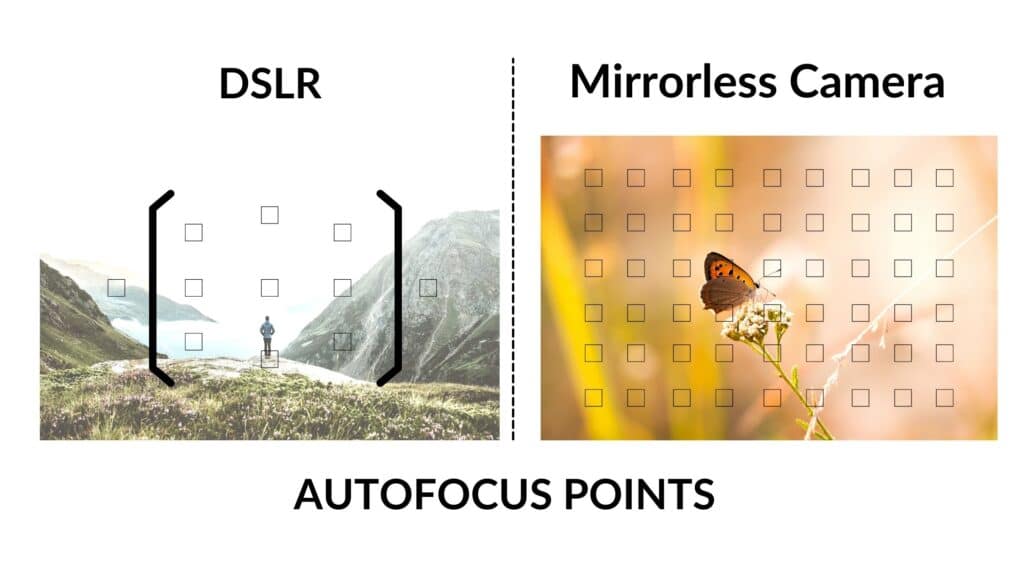
As Mirrorless Cameras Typically have Many Autofocus Points than their DSLR Counterparts they are excellent in Tracking the Subjects Realtime and is Excellent for Sports Photography.
This advanced technology cannot be incorporated into DSLR’s as they need to have light coming into them constantly.
This Round Goes for Mirrorless
Mirrorless vs DSLR : Limitations
We did talk about the Key Differences between both DSLR’s and Mirrorless Cameras, but going in-depth and talking about each camera’s limitations and advantages would be a nice way of helping someone find an answer in this very heated debate.
DSLR Pros
- Affordable
- Wide Range of Lens Selection
- Great Image Quality for the Price
- Relatively Good Battery Life.
- More Weight can be beneficial in reducing the Camera Shake.
DSLR Limitations
- Bulky and Hard to Carry around.
- Complicated Mirror System makes it hard to Repair and Maintain.
- Noisy Shutter
- No Live Preview and Information overlay in View Finder
- Low Continuous Shutter speeds
- Relatively Less Video Features
Mirrorless Advantages
- Light and Easy to Carry around
- Electronic Shutter is Almost Silent.
- Live Preview in View Finder is Great for Seeing the Final Outcome.
- Great Continuous Shutter Speeds
- Great Video Features
- Great Autofocus Capabilities
Mirrorless Limitations
- Battery Life is Relatively Poor
- Not Many Lenses for Everyone.
- Small Weight may cause Camera Shake.
- Expensive to get one.
DSLR Camera Limitations:
Let’s start with DSLR Limitations:
Size and Bulk:
I’ve mentioned it above many times and ill say it again, the DSLR will always fall short in terms of size and bulk since it has to fit in all that glass, especially the Reflex Mirror and Optical Viewfinder which has to be directly on top of the Reflex Mirror. Because of this, almost every DSLR has the same exterior look.
⦁ Weight:
Large size and bulk equate to more weight. Many entry-level DSLR’s do have lighter weights since they are made up of plastic and lighter components. But the majority of DSLR’s will always be heavier as they need to house the mirror and optical viewfinder because they can’t work without them.
⦁ Complicated Mirror and Shutter Design:
Whenever you press the shutter button, the mirror moves up and down, so that light can pass through it onto the sensor, this moving of parts can cause a lot of problems like:
⦁ Mirror OR Shutter Slap:
DSLR’s in general produce a lot of noise when it comes to taking a picture as the shutter has to come up and down every time you take a picture. This results in a “Slap” sound which is satisfying to me personally but many people find it annoying and in certain circumstances, it can be problematic, like when you are taking pictures in an opera where ultimate silence is needed.
Many companies have figured a way around it, like Nikon’s “Quiet Mode” which does make the shutter noise low but it’s still noticeable.
This “Slap” can also cause shakiness which may ruin long-exposure shots.
⦁ Expensive to Build and Maintain:
The complicated mirror mechanism, having dozens of parts is hard to maintain and build that is why DSLR’s are expensive in general and repairing them costs a ton. I had to experience it since my shutter broke and my camera was gone to the service repair center for 2 weeks.
⦁ NO Live Preview via (OVF):
The Optical Viewfinder not having Live-View Mode does make it hard to know how your camera’s settings are affecting the final image as you can’t see until you’ve taken the picture. To do that you’ll have to use the LCD which can take a bit of time.
⦁ Slower Continuous Shooting Speeds:
Since DSLR’s have a slower AF System and they constantly need to flip the Reflex Mirror up and down, it causes the camera to reach its limit in shooting continuously that’s why DSLR’s in general have a Slower Continuous Shooting Speed.
⦁ Video Shooting:
If we look at the cheaper spectrum of DSLR’s, then they do offer basic 1080p Video Resolution but at a lower FPS. If one does want 4K or a higher FPS then they’ll have to buy a more expensive DSLR.
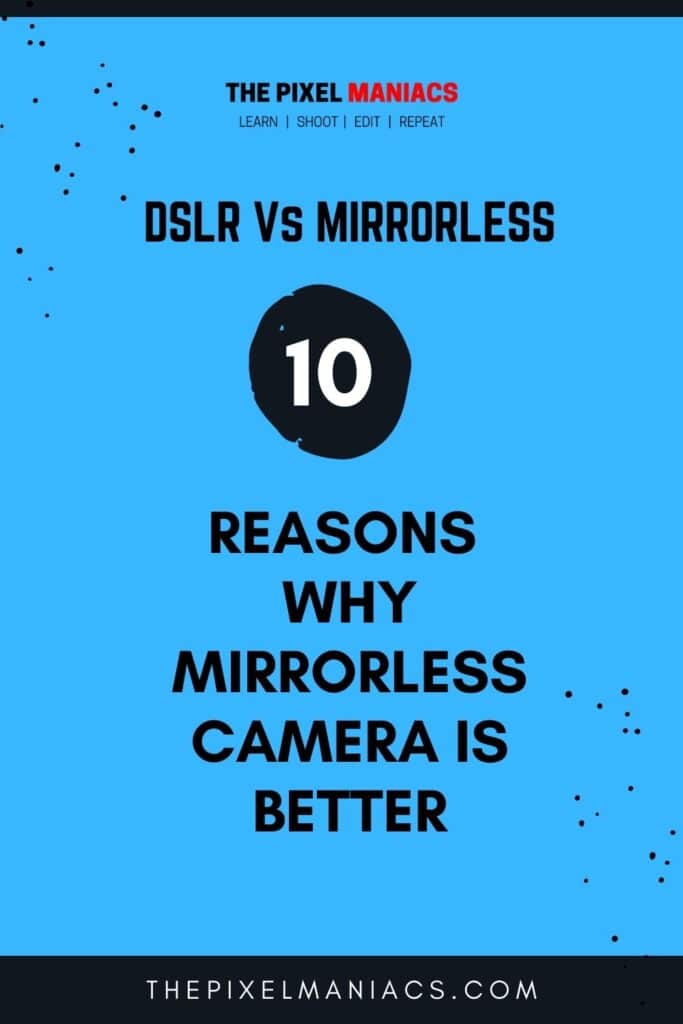
Mirrorless Camera Advantages
⦁ Smaller Size and Lighter Weight:
Removing the mirror solves a lot of problems, even the big one which is Size and Weight. No mirror means a smaller size and no mirror means getting rid of all that glass, which cuts down weight by a whole lot. This helps in keeping the camera compact and small, and this is good as nowadays people usually use their smartphones, which are very compact and small.
Unlike before when people used to buy cameras which were bigger and offered more features, people will nowadays tend to buy smaller cameras, as they are easier to carry and use. Mirrorless offers the same features as a DSLR but in a very small form factor which is a huge advantage.
⦁ No Mirror Mechanism:
Since there is no Mirror that means no “Slapping Sound” and this means a lot of good things like:
⦁ Less Noise:
No “Slapping Sound” means no noise is produced which means you can shoot silently.
⦁ Easier to Clean:
Cleaning Mirrorless cameras is much easier than DSLR’s since there are fewer components inside. Other than this there aren’t a lot of empty spaces where dust could gather and cause problems. So thus, easier to clean without something going wrong.
⦁ Live Preview:
One of the biggest advantages of having mirrorless cameras is that you get Live-Preview which means that you can see your real-time settings in real-time, which helps in taking better pictures.
⦁ Faster Continuous Shooting Speeds:
Since there isn’t any mirror between the Image Sensor and shutter so more focus points can be incorporated into the Sensor which helps with Faster Continuous Shooting Speeds, and since there are fewer moving parts so the camera itself isn’t limited by anything and can shoot faster and over a longer period.
⦁ Price:
Having no mirror in general and fewer moving parts means that Mirrorless are cheaper to build and easier to fix. This is somewhat true but since they are a newer technology so parts are expensive but soon, they’ll probably become cheap. Also, since the majority of people still don’t own a mirrorless camera so to cover cost production companies charge more for these products so they become more expensive but as the years go by, mirrorless will get cheaper.
⦁ Electronic Viewfinder:
The Electronic Viewfinder is sort of a blessing in disguise, as it does drain battery but there are more advantages to it than disadvantages
⦁ Information Overlay:
Electronic View Finder has its perks over the standard Optical View Finder (OVF) like you get more information in the viewfinder and the ability to customize it since it’s digital. You can get different histograms, different warnings and live exposure data. The OVF on the other hand is fixed and can’t be changed.
⦁ Live Preview:
I’ve said this many times and I’ll say it again, Live-View Mode, meaning the same preview that will be shown on the LCD will be in the viewfinder.
⦁ Image Review:
OVF does not show the image that was taken, instead, you have to look at the LCD to preview the image. Well that all goes out of the window with Mirrorless as you can see the image you took inside the viewfinder.
⦁ Focus Peaking:
This is a very useful feature as it shows you what the camera is focusing on so you can nail focus while using manual focus. The focused area gets painted over in these weird colors so you know exactly what you are capturing. This doesn’t happen in OVF.
⦁ No More Viewfinder Coverage Issues:
With OVF, you typically get something like 95% viewfinder coverage, especially on lower-end DSLR models. This means that what you see in the viewfinder is about 5% smaller than what the camera will capture. With EVF, you no longer have this problem, because it will always be 100% viewfinder coverage since what you see in the EVF is what the sensor will capture.
⦁ Much Brighter Display:
If the light conditions are poor, you can’t see much through an OVF. Focusing with OVF in low light is likewise troublesome because you can’t know if the subject is in the center until you snap the photo. With EVF, brightness levels can be “standardized”, so you can consider everything to be in case it was light. Some noise may be available; however, it is still way better compared to attempting to look through an OVF.
⦁ Digital Zoom:
This one is by a long shot my most loved component! If you have utilized a Live View mode on your DSLR previously, you know how helpful zooming in on a subject can be. With most current DSLRs, you can zoom in to 100% and truly nail center. All things considered, with mirrorless cameras, this component is built right into the viewfinder! So, imagine physically centering with a lens, then, zooming in 100% just inside the viewfinder before you snap a photo. Every mirrorless camera can do this. It’s a given that an OVF could always be unable to zoom like that.
⦁ Face and Eye Tracking:
Now we are moving to the coolest part of the EVF technology. Because the EVF shows what happens on the sensor, additional technologies for data analysis can be utilized to do very cool things, like face and even eye-tracking! I am sure you have seen face tracking on smartphones and point and shoot cameras, but if you take it a step further, you could have the camera automatically focus on the nearest eye of the person that you are photographing. How cool is that? Many camera manufacturers are already doing this very efficiently on their mirrorless cameras!
⦁ Unlimited Focus Points:
As you know, most DSLR cameras have a set number of Focus Points that are dispersed generally around the center of the frame. While it works out much of the time, what do you do on the off chance that you want to move the center highlight an outrageous line of the casing? The main choice is to concentrate and recompose, however, that probably won’t be consistently alluring, since you are additionally moving the plane of concentration.
Furthermore, anything away from the middle center point is normally off base and could bring about “center hunting”, where the camera battles with AF obtaining and goes this way and that consistently. With mirrorless cameras and stage location sensors set straightforwardly on the imaging sensor, this limit is lifted. Difference location has effectively been conceivable anyplace on the imaging sensor.
however, presently most new mirrorless cameras have additionally added the capacity to zero in through on-sensor stage identification, with center focuses conveyed over the majority of the sensor, right to the outrageous lines.
⦁ Eye Damage/Protection:
When glancing through a viewfinder, one must be very cautious about capturing incredibly brilliant wellsprings of light (like the sun), particularly with long central length focal points. With EVF, the picture is projected through the sensor and there is no damage to your eyes.
Mirrorless Camera Limitations:
We’ve gone over the many advantages of DSLR’s and Mirrorless Cameras, now let’s talk about the final straw, the limitations of Mirrorless Cameras.
⦁ EVF LAG:
Previous limitations of EVF were quite laggy and unresponsive, resulting in problems and OVF were considered better but over the years EVF has gotten better and this limitation may be gone in a year or two.
⦁ Battery Life:
In my opinion, this is one of the two biggest limitations of Mirrorless cameras at the moment. Providing constant power to the LCD and EVF drains the battery and many expensive mirrorless cameras are rated for about 300 to 400 shots. And their DSLR counterparts can easily do 1000 shots.
This isn’t a big issue for people that can charge their camera or carry extra batteries but it’s an issue and it is being resolved by making powerful batteries and energy-efficient screens which would help.
There isn’t a lot of limitations to what mirrorless can’t do and even the things that they can’t do, they will be able to do it in a few years and the above list will cease to exist.
⦁ Camera Shake *
* Smaller Weight may cause more camera shake when using handheld.
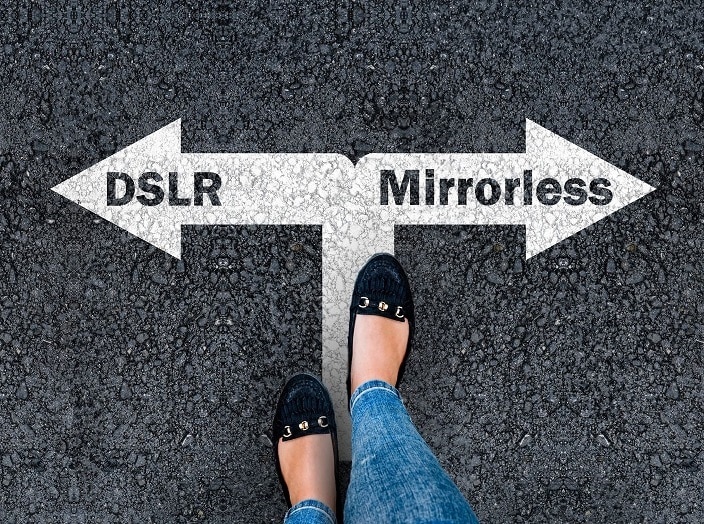
Buying Into the “System”:
Let’s talk about both systems in general, we talk about how Mirrorless is the future but if we look at the sales chart of many camera companies in general then we can see that DSLR’s still rule the market. Pretty confusing right????
Buying a camera is a pretty big investment and one looks into the pros and cons of buying into a new system.
Well, it’s pretty simple why they do it in the first place, firstly DSLR’s have been in the market for quite some time and many are not keen on changing their system. Secondly, it takes time to influence a group of people to hop onto another bandwagon, as it’s a pretty big investment in selling your old gear and buying new gear.
It is an expensive process even though adapters can be used but still, it isn’t fun and the whole process of re-learning about the new gear takes time.
Buying a camera is a pretty big investment and one looks into the pros and cons of buying into a new system. Some mirrorless cameras haven’t matured enough or been in the market for long enough to attract people.
But things change fast in this world and as for the camera industry, every year we see new products being launched and slowly but surely the range of lenses for mirrorless seems to be growing and soon we may see a huge variety of lenses to choose from.
Future of Inter-changeable Lens Cameras:
The Future of DSLR (Is there one?):
If we see the future of DSLR’s then in my opinion you can only redesign so much about something. There comes a time when the hardware reaches its limit. I agree that a company can deliver better Resolutions, offer better AF Modules and maybe offer better GPS and WIFI but improving that every year doesn’t spark a whole lot of “I wanna change my camera vibes”.
According to statista Over 2.4 Million Units of DSLRs are Sold last year while Mirrorless cameras are sold over 2.9 Million Units.
Statista
It’s like smartphones, they just keep producing the same thing in a different shape and it’s not very innovative, to be honest. There isn’t a lot to excite young photographers in DSLR’s. And even companies like Nikon and Canon have stopped releasing new DSLR models.
It’s just not worth the effort to produce new DSLR’s. So, there isn’t a bright foreseeable future for DSLR’s.
The one thing that may be going good for them is if someone doesn’t want to buy new gear so they can stick to buying old DSLR’s since they haven’t lost their magic yet and do deliver promising results.
There’s a whole market for DSLR’s but it’s nothing innovative or interesting if you want to look for something new.
The Future of Mirrorless:
If we look at the future of Mirrorless then in my opinion, they are the future and the way to go. I would say that mirrorless cameras reignited the camera industry by providing new, innovative technology to the masses.
The possibilities of Mirrorless are endless and a lot can be done with these new systems, like imagine what more could be done EVF and the AF System alone.
The only problem I see with mirrorless is that their price is too high for the average photographer and that they offer a bit less range of lenses than their counterpart DSLRs. Both of which are solvable issues and will be solved soon.
The features that mirrorless offer is just too good to be true and Mirrorless is the future and the way to go.
Disagree With Me?
anyone disagreeing with me? Share Your Thoughts on the Comments Below.
Conclusion and Recommendations:
In the end, I would say that both systems are phenomenal and like “Magic”, both deliver what they promise and both capture amazing pictures.
I would not like to sound cliché but in the end, it’s up to the photographer, what suits them and what doesn’t. What they are comfortable with and what they aren’t comfortable with. What are their needs and not?
Recommendations
We have a List of Camera Recommendations Do check them
=> Best Camera for Beginners
=> Best Camera for Newborn Photography
=> Best Camera for Product Photography
=> Best Point and Shoot Camera under 300
If you have the money to spend on mirrorless cameras then go for it as they are amazing cameras, but if you already own a DSLR and have a bunch of lenses then I would suggest you hold on to them for a while. As it gets expensive in changing the system. If you are new to photography then I would suggest going for entry-level DSLR’s with the kit lens as they will no doubt suit your needs.
Both the systems have their pros and cons, both perform well and both have their advantages and disadvantages.
It’s like Pepsi vs Coke for now, as some people like Pepsi while others favor Coke, there’s no real difference between the two, other than if you ask a beverage fanatic, then they will point out the differences, like one has more sugar than the other, the other has more of this and less of that.
It’s the same for DSLR vs Mirrorless, over the top both differ in packaging like Coke and Pepsi, they offer you the same thing, which is shooting pictures and recording video and more or less they are the same thing. But I feel like this analogy of Coke VS Pepsi cannot be used soon as Mirrorless will get and are getting better than DSLR.
But there’s still time and you the reader can’t really wait for that time to come, so if you want to go and buy a camera right now, then remember, if you have the money to buy mirrorless then go right ahead and buy it but if you are new to photography or not willing to spend that much on photography then ill suggest you stick to DLSR.
That settles the debate for DSLR vs Mirrorless and I wish you good luck on your journey in photography.




